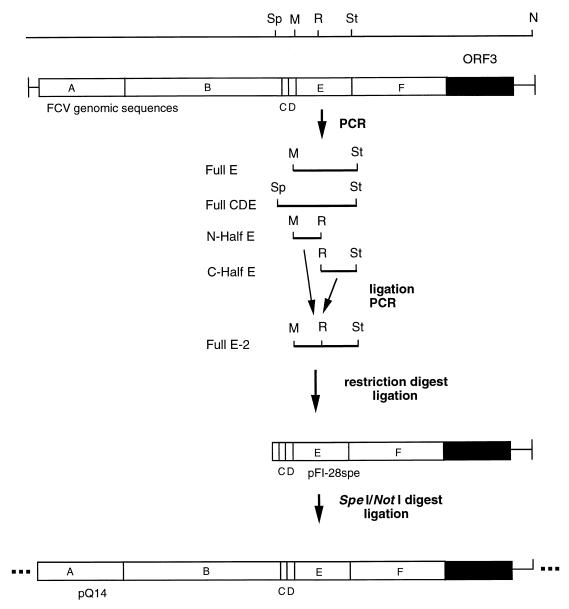FIG. 1.
PCR amplification and subcloning of E region sequences from the FCV capsid protein gene to construct domain exchange chimeric viruses. The domains of the FCV capsid protein are shown at the top as encoded by the 2.4-kb subgenomic RNA. A to F represent previously described domains of the capsid protein (17). ORF3 is a small open reading frame immediately following the capsid protein gene. The sequences encoding the domain to be exchanged were PCR amplified with restriction sites included on the ends. The line above the genomic sequences show locations of the restriction sites used in the DNA manipulations. Sp, M, St, and N represent SpeI, MscI, StyI, and NotI restriction sites, respectively, found in the URB cDNA sequences; R represents a restriction site engineered to construct the half-domain exchanges. The full E domain contains the complete E region plus some flanking sequences. The full CDE domain contains the complete C, D, and E regions plus some flanking sequences. The N-half E (N-terminal) and C-half E (C-terminal) domains were used to construct the half-site exchanges. The half E fragments were digested with the R restriction endonuclease, ligated, and reamplified as with the full E domain to yield the full E-2 domain. The E, E-2, and CDE domains were cloned into the URB strain FCV pFI-28spe shuttle vector and then into the pQ14 URB strain infectious cDNA clone (25) as a SpeI/NotI fragment. The three periods at the ends of the sequences represent the remainder of the plasmid.

